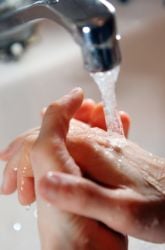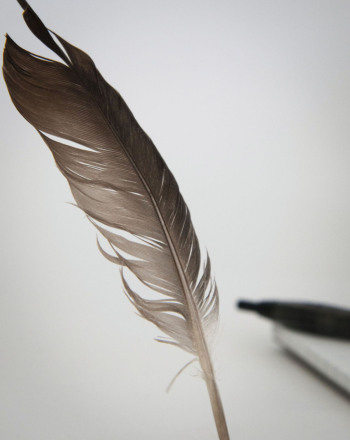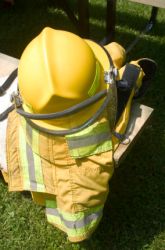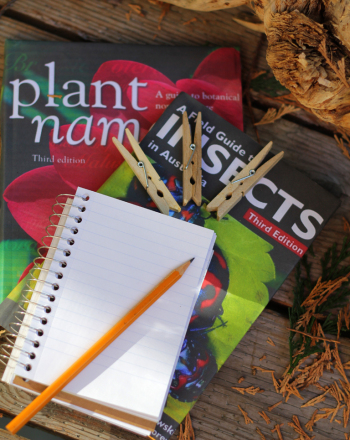Science project
What Is the Most Effective Sunscreen?
The sunscreen industry markets its products with SPF (Sun Protection Factor) ratings. Sunscreen products of various SPF ratings will be tested for their UV absorbance and effectiveness.
Earth's atmosphere prevents most ultraviolet (UV) radiation given off by the Sun from reaching the ground. The radiation tends to be screened out by stratospheric ozone, which is about 35 km above the Earth's surface. UV radiation has both positive and negative effects. Positive effects of UV radiation include warmth, light, photosynthesis in plants, and vitamin D synthesis in the human body. However, too much exposure to UV damages skin cells and leads to wrinkled and patchy skin, cataracts, and even skin cancer.
Ultraviolet (UV) radiation is often divided into three different ranges: UV-A, UV-B, and UV-C. UV-A radiation constitutes about 90-95% of the UV radiation that reaches the Earth's surface and can penetrate deeply into the skin, leading to premature skin aging and cancer. UV-B radiation does not penetrate the skin as far as UV-A rays, but it contains much more energy. UV-B is involved in tanning and sunburn, and can cause cellular damage in the skin and eyes. UV-C radiation has the highest energy ultraviolet wavelength, but most of it is absorbed by the ozone layer in the Earth's upper atmosphere.
When the human skin absorbs UV radiation, two effects occur. First, melanin (a substance located in skin cells) absorbs as much UV radiation as possible and is changed to a darker color. The second effect is the destruction of the cells responsible for making new cells, or even worse, a rearrangement or chemical change in the DNA within these cells. If these special cells are destroyed, the nervous system sensors are also damaged resulting in pain and increase in the blood circulation in the area, producing the characteristic red skin of sunburn.
Sunscreen contains ingredients that can absorb and/or filter UV-A light from the sun so that less of it reaches the deeper layers of the skin. Sun-block, on the other hand, reflects or scatters the UV light away so that it doesn't reach the skin at all. Since the best and most thorough protection comes from blocking both UV-A and UV-B rays, the ideal sunscreen should be designed to do both. Often, these sunscreens will state that they provide "Broad-Spectrum" coverage.
Another important factor that needs to be discussed when defining how sunscreens work is the Sun Protection Factor, or SPF. The SPF applies to UV-B rays only, since those are the rays that cause sunburn. Human skin has a natural SPF, partially determined by how much melanin is present in the skin. The SPF is a multiplication factor. If a person can stay out in the sun 15 minutes before burning, using a sunscreen with an SPF of 10 would allow that individual to resist the sunburn for 10 times longer (150 minutes).
UV-sensitive beads contain photo-chromatic dyes that react to UV light and cause the normally white beads to change into vibrant colors when exposed to sunlight. When the detector is shielded from UV radiation, the beads turn purple, even on a cloudy day. As the intensity of UV radiation increases. the color gets darker. The detector contains a color scale which enables the user to determine the UV index.
In this project, determine the effectiveness of sunscreen lotions in blocking the Sun's ultraviolet (UV) radiation using a UV Bead Detector. Evaluate the amount of UVA penetration when using sunscreens with different sun protection factors (SPF).
Safety:
- Investigator should not look directly at the Sun while using the UV detector as it may cause permanent eye damage, nor stay exposed to the Sun's ray for a prolong time period.
- The UV Detector tube contains beads pieces that are small which may be considered a chocking hazard if place in the mouth. Children under 3 years old should not handle the detector tube.
Materials
- Various sunscreens with SPF values of 10, 15, 20, 30, & 50
- Box of clear quart-size plastic sealable bags
- UV Bead Detector.
Research Questions
- What is the difference between UV-A and UV-B radiation?
- Why is prolong exposure to ultraviolet radiation (light) harmful to the eyes and skin?
- What protection from UV radiation should an effective sunscreen offer?
- What does a sunscreen's "SPF" rating mean?
- Does SPF tell how well a product blocks UVA or UVB?
- How does sunscreen differ from sun-block?
- Which sunscreen is most effective at blocking UV light?
- Are the experimental results consistent with the SPF rating for each sunscreen tested?
- What safety features are designed into the UV Bead Detector?
- Does SPF 30 have twice as much protection as SPF 15?
- What reduces the effectiveness of sunscreen?
- What should one look for when buying sunscreen?
Procedure
- Conduct this activity on a bright sunny day
- Place the UV-Detector inside of a clear plastic bag and seal. Make sure that only the plastic is between the sun and the detector
- Record the color intensity reading shown on the scale. This is the control reading, and will be a baseline to compare the other readings to see if they increase or decrease.
- Apply a uniform layer of SPF 10 sunscreen over the bag. Make sure the bag is thoroughly covered. Allow the lotion to dry.
- Place the bag in direct sunlight.
- Wait 10 minutes to allow the detector beads to change color. Record any color change.
- Remove the UV-Detector from the bag.
- Place the detector in area where it will not receive sunlight until the beads turn back to white.
- Place the UV-Detector inside of another clear plastic bag and seal.
- Apply a layer of SPF 15 sunscreen over the bag as before.
- Place the bag in direct sunlight, wait 10 minutes, record the results, and place the detector in an area where sunlight cannot penetrate.
- Repeat this same procedure using sunscreens of 20, 30, and 50 SPF values.
- For a more scientifically accurate investigation the entire processed should be repeated twice more.
- Calculate the average UV reduction (if any) for each sunscreen by adding the values from the three independent results and dividing the sum by three.
- Record the data in a table similar to the one shown. Use the terms "White," "Light blue," "Medium blue," or "Intense or dark blue" when recording the UV-bead color intensity.
|
Sunscreen SPF Value
|
UV Bead Detector Color Intensity
|
UV Level
|
|
10
|
|
|
|
15
|
|
|
|
20
|
|
|
|
30
|
|
|
|
50
|
|
|
- Using the data in the table, plot a bar graph with SPF Value along the x-axis and the UV Penetrating Intensity Level along the y-axis.
Education.com provides the Science Fair Project Ideas for informational purposes only. Education.com does not make any guarantee or representation regarding the Science Fair Project Ideas and is not responsible or liable for any loss or damage, directly or indirectly, caused by your use of such information. By accessing the Science Fair Project Ideas, you waive and renounce any claims against Education.com that arise thereof. In addition, your access to Education.com's website and Science Fair Project Ideas is covered by Education.com's Privacy Policy and site Terms of Use, which include limitations on Education.com's liability.
Warning is hereby given that not all Project Ideas are appropriate for all individuals or in all circumstances. Implementation of any Science Project Idea should be undertaken only in appropriate settings and with appropriate parental or other supervision. Reading and following the safety precautions of all materials used in a project is the sole responsibility of each individual. For further information, consult your state's handbook of Science Safety.













